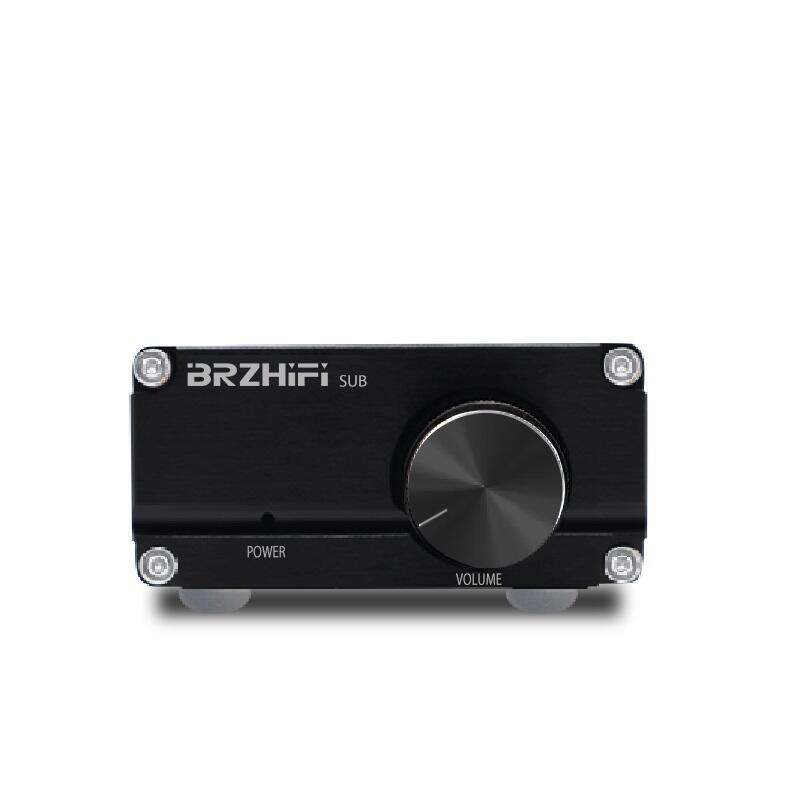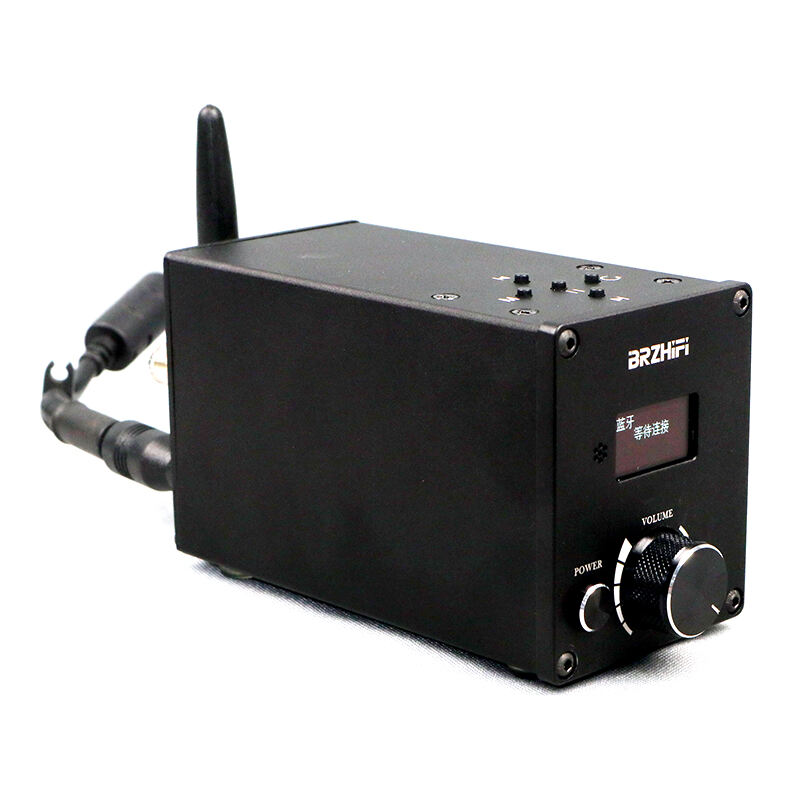The Evolution of Audio Technology in the Digital Age
The world of audio has undergone a remarkable transformation with the advent of digital amplifiers. These innovative devices have revolutionized how we experience sound, offering unprecedented levels of efficiency and clarity that were once thought impossible. As modern audio systems continue to evolve, digital amplifiers have emerged as the cornerstone of high-performance sound reproduction, combining sophisticated signal processing with energy-efficient operation.
Digital amplifiers represent a significant leap forward from their analog predecessors, utilizing advanced switching technology and digital signal processing to deliver clean, powerful audio while maintaining exceptional energy efficiency. This technological advancement has made them increasingly popular in everything from home theater systems to professional audio installations, where their compact size and superior performance characteristics offer distinct advantages.
Core Technology Behind Digital Amplification
Signal Processing and Conversion
At the heart of digital amplifiers lies sophisticated signal processing technology. The incoming analog audio signal is converted into digital form through high-precision analog-to-digital converters. This digital signal can then be processed with incredible accuracy, allowing for precise control over various audio parameters. The conversion process maintains the integrity of the original sound while enabling advanced features like real-time error correction and signal optimization.
The processing stage also includes sophisticated algorithms that help reduce distortion and noise, ensuring the cleanest possible audio output. Modern digital amplifiers employ multiple processing stages to handle different aspects of the signal, from initial conversion to final output shaping, resulting in unprecedented audio quality.
Class-D Architecture and Efficiency
Digital amplifiers typically utilize Class-D architecture, which represents a significant advancement in amplification technology. Unlike traditional Class-AB amplifiers that operate in a linear fashion, Class-D designs use rapid switching techniques to create highly efficient power output stages. This approach allows digital amplifiers to achieve efficiency ratings often exceeding 90%, compared to the 50-60% typical of conventional designs.
The high efficiency of digital amplifiers translates into several practical benefits. They generate less heat, require smaller power supplies, and can be built into more compact enclosures. This efficiency also contributes to lower energy consumption, making them increasingly popular in environmentally conscious applications and portable devices where battery life is crucial.

Performance Advantages in Modern Systems
Audio Quality and Precision
Modern digital amplifiers deliver exceptional audio quality through precise control over the amplification process. The digital signal processing capabilities allow for exact reproduction of the input signal, with minimal distortion and noise. Advanced error correction and feedback systems continuously monitor and adjust the output, ensuring optimal performance under varying conditions.
The precision of digital amplifiers extends to their frequency response, which remains consistent across the entire audio spectrum. This uniformity results in more accurate sound reproduction, particularly in critical listening applications where subtle nuances must be preserved. The technology also enables precise control over various audio parameters, allowing for customized sound profiles and optimal performance in different acoustic environments.
Integration and Connectivity
Digital amplifiers excel in modern audio systems thanks to their superior integration capabilities. Their native digital architecture makes them ideal for use with contemporary sources like streaming devices, digital audio players, and network audio systems. The ability to process digital signals directly, without unnecessary conversion stages, helps maintain signal integrity throughout the audio chain.
Modern connectivity options in digital amplifiers include USB, HDMI, optical, and network interfaces, enabling seamless integration with a wide range of audio sources and control systems. This versatility makes them particularly valuable in multi-room audio setups and smart home installations, where flexibility and compatibility are essential.
Applications and Implementation
Professional Audio Systems
In professional audio applications, digital amplifiers have become increasingly prevalent due to their combination of power, efficiency, and reliability. Concert venues, recording studios, and broadcast facilities benefit from their consistent performance and reduced power consumption. The compact size of digital amplifiers also makes them ideal for portable PA systems and touring applications, where space and weight considerations are crucial.
Professional installations often take advantage of the advanced monitoring and control capabilities offered by digital amplifiers. Network connectivity allows for remote management and real-time performance monitoring, while built-in protection systems help prevent damage from overload or thermal stress.
Consumer Electronics Integration
The consumer electronics market has embraced digital amplifiers for their efficiency and performance characteristics. From soundbars to wireless speakers, these devices benefit from the compact size and low heat generation of digital amplification. The technology's energy efficiency is particularly valuable in battery-powered devices, where power consumption directly impacts operating time.
Home theater systems increasingly rely on digital amplifiers to deliver high-quality multichannel audio while maintaining reasonable power consumption and heat output. The technology's ability to handle multiple channels efficiently makes it ideal for immersive audio formats like Dolby Atmos and DTS:X.
Future Developments and Trends
Advancing Technologies
The future of digital amplifiers looks promising, with ongoing developments in several key areas. Improved semiconductor technologies are enabling even higher efficiency levels and better performance, while advanced signal processing algorithms continue to push the boundaries of audio quality. Research into new switching technologies and output stage designs promises to further enhance the capabilities of digital amplification.
Integration of artificial intelligence and machine learning algorithms is beginning to appear in high-end digital amplifiers, offering potential for advanced room correction and automated optimization. These technologies could revolutionize how digital amplifiers adapt to different acoustic environments and usage scenarios.
Environmental Impact and Sustainability
The energy efficiency of digital amplifiers aligns well with growing environmental concerns and sustainability initiatives. As energy regulations become stricter worldwide, the technology's low power consumption and high efficiency make it increasingly attractive to manufacturers and consumers alike. Future developments are likely to focus on further reducing power consumption while maintaining or improving performance levels.
Materials science advancements are also contributing to more sustainable digital amplifier designs, with research into recyclable components and environmentally friendly manufacturing processes. These developments suggest a bright future for digital amplification in an increasingly eco-conscious world.
Frequently Asked Questions
How do digital amplifiers compare to traditional analog amplifiers in terms of sound quality?
Digital amplifiers have evolved to match or exceed the sound quality of traditional analog amplifiers in many aspects. They offer excellent clarity, low distortion, and precise control over the audio signal. While some audiophiles still prefer the characteristic warmth of analog amplifiers, modern digital amplifiers can deliver exceptional sound quality while providing superior efficiency and additional features.
What makes digital amplifiers more energy-efficient than conventional amplifiers?
Digital amplifiers achieve higher energy efficiency through their Class-D architecture and switching technology. Unlike traditional amplifiers that operate in a linear fashion and waste energy as heat, digital amplifiers use rapid switching techniques that minimize power losses. This results in efficiency ratings often exceeding 90%, compared to the 50-60% typical of conventional designs.
Are digital amplifiers suitable for all types of speakers?
Digital amplifiers can work effectively with most modern speakers, but compatibility should be considered when matching them with specific speaker models. Their high damping factor and quick response characteristics make them particularly well-suited to contemporary speaker designs. However, some vintage or highly specialized speakers may require specific consideration regarding impedance matching and power requirements.

